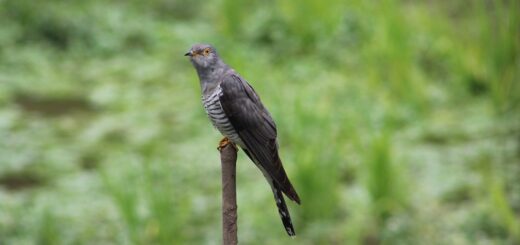Red Grouse
Understanding the Red Grouse: A Comprehensive Guide
The Red Grouse, scientifically known as Lagopus lagopus scotica, is a medium-sized game bird found in Britain and Ireland. This bird is known for its vibrant red plumage and is a popular game species among hunters. Apart from its significance in the hunting community, the Red Grouse also plays a crucial role in the ecosystem of moorlands and uplands. In this comprehensive guide, we will delve into the various aspects of the Red Grouse, including its physical characteristics, habitat, behavior, conservation status, and its overall significance.
Physical Characteristics of the Red Grouse
The Red Grouse is easily recognizable by its deep red plumage, which is particularly prominent in males during the breeding season. The plumage serves as excellent camouflage in the heather moorlands where they reside. The birds have feathered legs, which provide insulation against the cold weather in their habitat. Both males and females have a white patch on their tail, which is visible when they are in flight. Red Grouse are well-adapted to their environment, with feathered nostrils that help them breathe in cold and snowy conditions.
These birds have a short, thick bill, which is an adaptation for their herbivorous diet. Their diet primarily consists of heather, berries, and shoots, which are abundant in their moorland habitat. Adult Red Grouse typically weigh between 450-600 grams, with females being slightly smaller than males. The physical characteristics of the Red Grouse are well-suited to their harsh upland environment, allowing them to thrive in challenging conditions.
Habitat and Distribution
The Red Grouse is native to Britain and Ireland, where it is primarily found in the upland areas of Scotland, northern England, Wales, and parts of Ireland. These birds are particularly associated with heather moorlands, where they find abundant food and suitable nesting sites. The heather moorlands provide the perfect cover for the Red Grouse, offering protection from predators and serving as a rich food source.
These birds are highly specialized to their habitat, with specific requirements for food, nesting, and breeding. The availability of heather is crucial for the survival of Red Grouse populations, making moorland management an essential factor in their conservation. Changes in land use and habitat degradation have had a significant impact on Red Grouse populations, making it essential to understand and protect their natural habitat.
Behavior and Breeding
Red Grouse are known for their distinctive calls, particularly during the breeding season. Males produce a unique chut-chut-chut sound to attract females and establish territory. The breeding season typically begins in late April to early May, with males engaging in elaborate displays to court females. Once a female is attracted, she will build a nest on the ground, usually in a shallow depression in the heather.
Red Grouse are monogamous and form pair bonds during the breeding season. The female will lay a clutch of 5-12 eggs, which she will incubate for around three weeks. Once the chicks hatch, they are precocial and able to leave the nest shortly after birth. The chicks are cared for by the female and learn to forage for food independently. The survival of the chicks is crucial for maintaining healthy populations of Red Grouse, as they face predation from birds of prey and mammals.
Conservation Status
The conservation status of the Red Grouse is of particular concern due to the decline in their populations in certain regions. Habitat loss and degradation, as well as disease and predation, have contributed to the decline of Red Grouse numbers in some areas. Additionally, changes in land management practices and climate change have also impacted their habitat and food availability.
Efforts to conserve the Red Grouse involve habitat restoration, predator control, and sustainable moorland management. Gamekeepers and conservation organizations work to maintain suitable habitats for Red Grouse, ensuring the availability of heather and other essential food sources. Additionally, monitoring and research help to understand the factors influencing Red Grouse populations and guide conservation efforts.
Significance of the Red Grouse
Red Grouse hold cultural, ecological, and economic significance in the regions where they are found. They are a popular game species, attracting hunters and contributing to the local economy through game shooting. The traditional pursuit of Red Grouse shooting has historical roots and continues to be a cherished activity for many. However, sustainable practices and conservation efforts are essential to ensure the long-term viability of this tradition.
Ecologically, Red Grouse play a vital role in the moorland ecosystem. As herbivores, they influence plant growth and distribution, particularly with their consumption of heather. Their presence also supports a diverse range of predators and scavengers, contributing to the overall biodiversity of the upland areas. Protecting Red Grouse habitats benefits a wide range of species and helps maintain the ecological balance of moorland ecosystems.
In conclusion, the Red Grouse is a fascinating and important bird species with a rich natural history and cultural significance. Understanding and conserving the Red Grouse is essential for maintaining healthy upland ecosystems and preserving a cherished tradition. By appreciating the unique characteristics and ecological role of the Red Grouse, we can work towards ensuring its survival for future generations.
| Physical Characteristics | Habitat and Distribution | Behavior and Breeding | Conservation Status | Significance |
|---|---|---|---|---|
| Distinctive red plumage | Associated with heather moorlands | Elaborate courtship displays | Conservation efforts | Cultural and ecological significance |
| Feathered legs for insulation | Native to Britain and Ireland | Monogamous pair bonds | Habitat restoration | Economic importance in game shooting |
| Herbivorous diet of heather and berries | Specific habitat requirements | Precocial chicks | Monitoring and research | Ecological role in moorland ecosystems |
